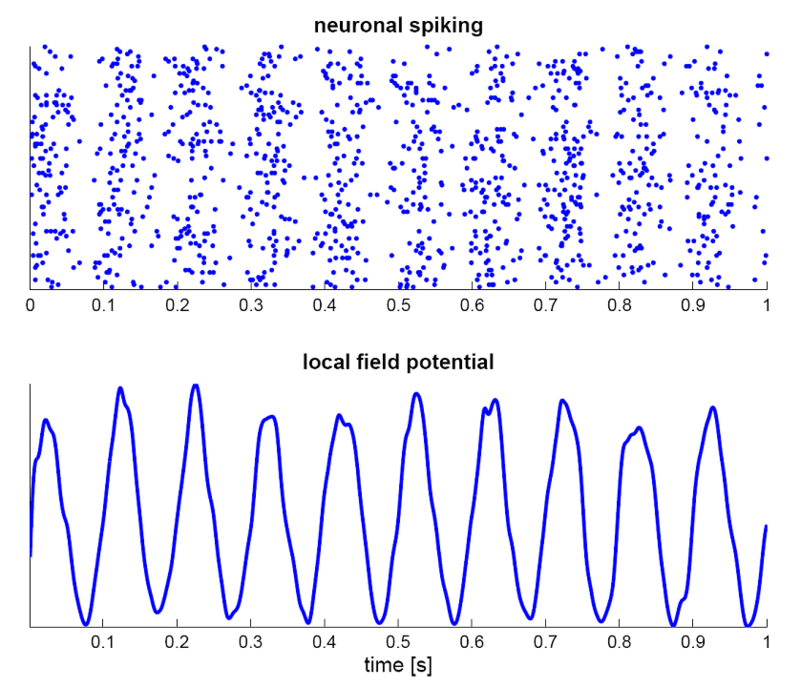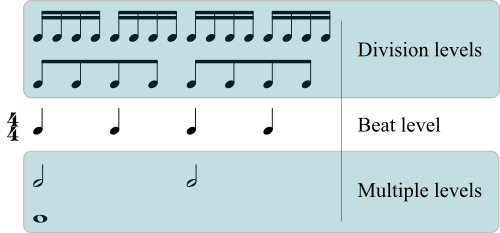Rhythm is pretty hard to define. Unlike rhythm metric onsets are not necessarily sounded but are nevertheless implied by the performer and expected by the listener.
The texture that combines two or more simultaneous melodic lines is called.

. The composer decides whether the pulse should be a half or a quarter or any other note value. Organizing patterns of rhythmic pulses are called. A collection of pitches arranged in ascending or descending order is called.
Rhythm is often confused with a different concept tempo. True music that moves without a strong sense of beat or meter is referred to as nonmetric. In a march this would be the position in time of each footstep.
In Western classical music the most salient feature of rhythm is the. Organizing patterns of rhythmic pulses are called. At least thats the definition you would get if you asked a metronome.
A Beat or rhythm is the steady regularly repeated pattern of movement or sound in music the pattern of repeated stressed pulses. The speed of the pulse is the tempo of the work. A combination of Picture signal and other Controlling signal or pulses is called Composite Signal.
1 1 pts Question 42 The musical symbol represents a note. The first accented beat of a measure is called a n. Meter that would most likely be associated with a march.
Group of answer choices. Intrametric confirming patterns such as dotted eighth-sixteenth note and swing patterns. Metric even patterns such as steady eighth notes or pulses.
Rhythm is how musicians connect and play with one another. True throughout history the voice has been a model for instrumentalists and instrument builders. Organizing patterns of rhythmic pulses are called.
Beats that are more strongly emphasized than others are said to be. It may refer to the pulse itself as in play this note on beat two of the measure. Italian in what language are tempo markings generally given.
Organizing patterns of of rhythmic pulses are called a offbeats b meters c syncopations d polyrhythms. Organizing patterns of rhythmic pulses are called a. In music metre or meter refers to the regularly recurring patterns and accents such as bars and beats.
These may be classified as. The basic unit of rhythm that divides time into equal segments is called. On the beat or on the downbeat refer to the moment.
The simultaneous use of 2 or more contrasting rhythmic patterns or meters is known as _____ polyrhythm ______ can be defined as the organization of beats into a recurring pattern of accented and unaccented beats. Organized patterns of rhythmic pulses are called. The metric pattern in which a strong beat alternates with a weak one is called.
Notes melody and chords can be easily described as vibrations in the airwaves that our eardrums can detect. The first accented beat of a measure is called. Group of answer choices.
1 1 pts Question 40 Organizing patterns of rhythmic pulses are called polyrhythms. A variety of systems exist throughout the world for organising and playing metrical music such as the Indian system of tala and similar systems. Rhythm consists of many patterns of sounds and silences.
Group of answer choices. Beat Beat also has more than one meaning but always refers to music with a steady pulse. If we were to evenly tap out the rhythm to these dots we would have a beat pattern.
Neither a pulse nor a regular pattern of accented values is present 7238. Organizing patterns of rhythmic pulses are called. Each element can be more or less.
Duration pulse rhythmic gestures and meter. The first accented beat of a measure. In triple meter the strongest pulse occurs on.
Meter is marked off in groupings known as a. Pitches that are distinguished rhythmically only by duration. Meter is marked off in groupings known as.
A meters b offbeats c syncopations d polyrhythms. The standard ranges of human voices from highest to lowest soprano alto tenor bass a texture featuring a single unaccompanied line is called monophonic organizing patterns of rhythmic pulses are called meters instruments that produce sound from a vibrating string are called chordophones scat-singing is common in jazz. A durational pattern that synchronises with a pulse or pulses on the underlying metric level may be called a rhythmic unit.
1 1 pts Question 41 The deliberate shifting of the accent to a weak beat or an offbeat is called rhythm. Beats that are more strongly emphasized than others are said to be a. Organizing patterns of rhythmic pulses are called a.
Rhythm is the pattern of sounds and silences in music ___ 2 points. Organizing patterns of rhythmic pulses are called. As you can see e ach dot is spaced at the same distance.
The pulse commonly known as the beat is a regular unit of time around which the rhythm of a piece is organized. Meter is marked off in groupings known as. Beat is the recurrent regular throb or pulse that makes a person want to tap or clap in time with the music.
A combination of three or more tones that constitutes a single block of harmony is called. It can also refer to the pattern in time of a single small group of notes as in play this rhythm for me. The duration of a note is called its value ____2 points.
There are sixteen of them. Meters organizing patterns of rhythmic pulses are called. Below is an illustration of a visual example of a steady recurring pulse.
The basic unit of rhythm that divides time into equal segments is called the a. Texture where a single voice takes interest and others are subordinate is. Its what makes music music.

Central Pattern Generator Wikipedia

The Conventional Rhythmic Arrangement Of The 10 Note Melodic Sequence Download Scientific Diagram

Rhythm Definition Time Meter Britannica

Rhythmic Patterns Melodic And Timbral Aspects Omitted For Maraka Download Scientific Diagram




0 comments
Post a Comment